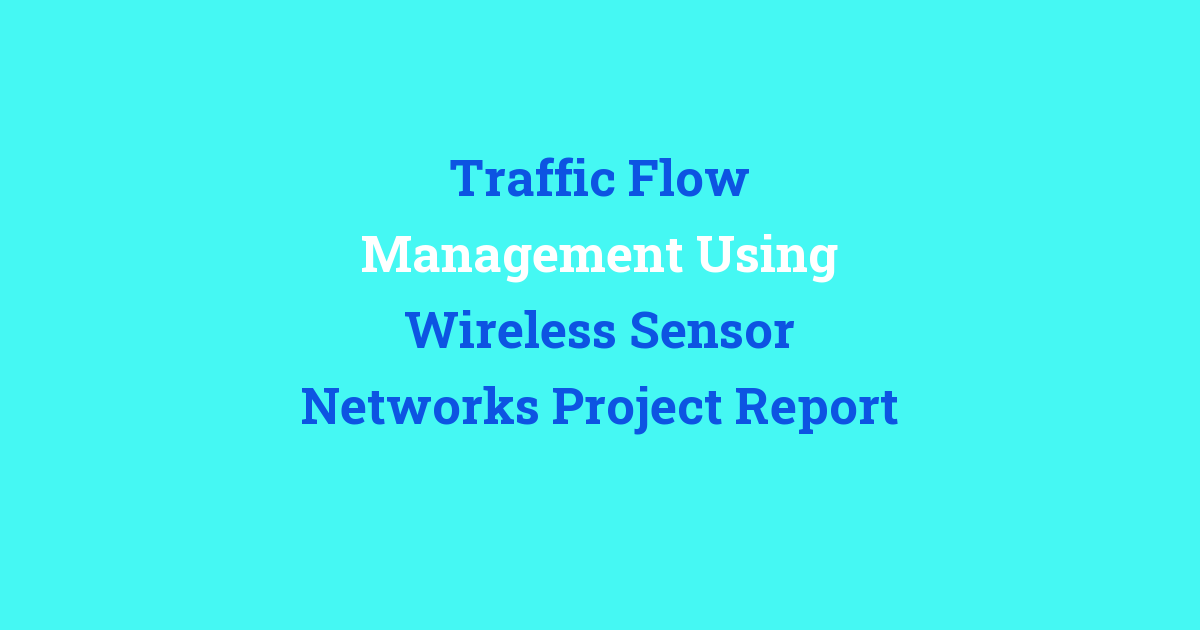Project report on managing traffic flow through wireless sensor networks.
Introduction
As technology continues to advance, the need for effective traffic flow management has become increasingly important. With the ever-growing population in urban areas, there is an urgent need for innovative solutions to alleviate traffic congestion and improve overall traffic flow. One such solution is the use of wireless sensor networks to monitor and manage traffic flow in real-time.
Problem Statement
Traffic congestion is a major issue in urban areas, leading to increased travel times, air pollution, and road accidents. The existing traffic management systems, such as traffic signals and cameras, are often inefficient and unable to adapt to changing traffic patterns. Furthermore, these systems require a significant amount of manual intervention, leading to delays and mistakes in traffic management.
Existing System
The existing traffic management systems rely heavily on fixed traffic signals and cameras to monitor traffic flow. These systems are often unable to provide real-time data on traffic conditions, leading to delays in responding to traffic congestion. Additionally, the fixed nature of these systems makes them inflexible and unable to adapt to changing traffic patterns.
Disadvantages
Some of the disadvantages of the existing traffic management systems include:
- Lack of real-time data
- Inflexibility
- Manual intervention required
- Unable to adapt to changing traffic patterns
Proposed System
Our proposed system aims to address these shortcomings by implementing a wireless sensor network to monitor and manage traffic flow in real-time. By utilizing wireless sensors placed strategically throughout the road network, our system will be able to collect data on traffic conditions and automatically adjust traffic signals to optimize traffic flow.
Advantages
Some of the advantages of our proposed system include:
- Real-time data on traffic conditions
- Automatic traffic signal adjustment
- Ability to adapt to changing traffic patterns
- Reduced need for manual intervention
Features
Our proposed system will include the following features:
- Wireless sensor network for real-time data collection
- Machine learning algorithms for traffic prediction
- Automatic traffic signal adjustment based on traffic conditions
- Mobile application for real-time traffic updates
Conclusion
In conclusion, the use of wireless sensor networks for traffic flow management has the potential to revolutionize the way traffic is managed in urban areas. By providing real-time data on traffic conditions and automatic traffic signal adjustment, our proposed system offers a more efficient and effective solution to traffic congestion. With the implementation of our system, we hope to create a more sustainable and safer urban environment for all.

